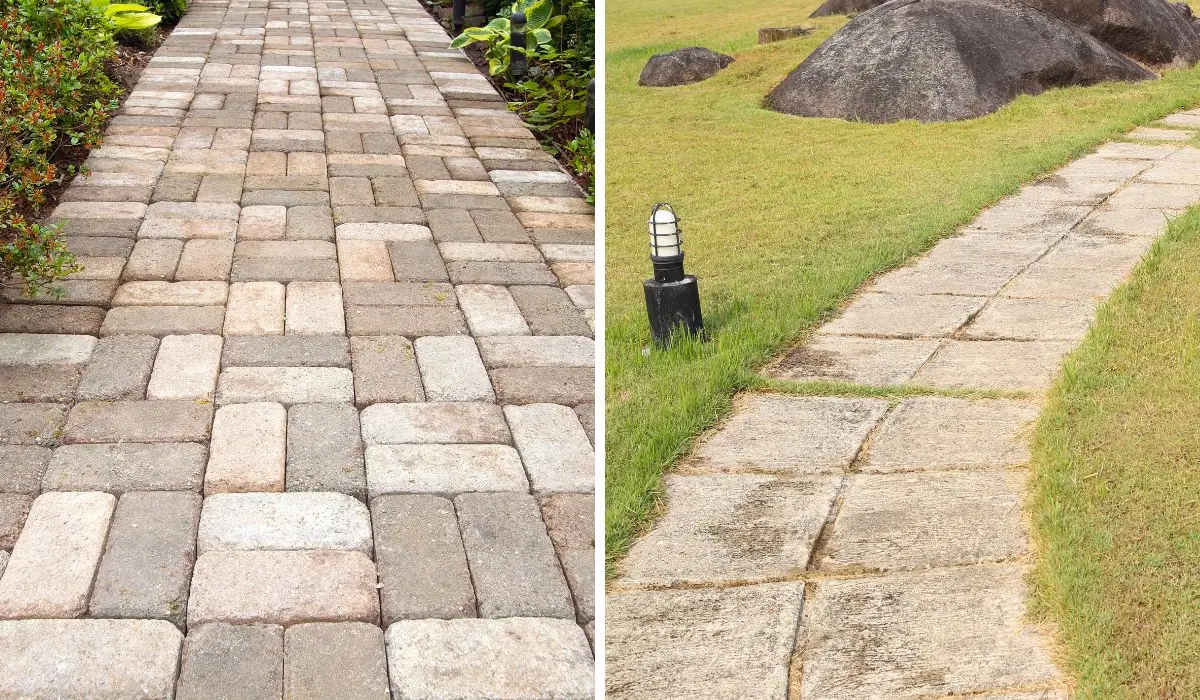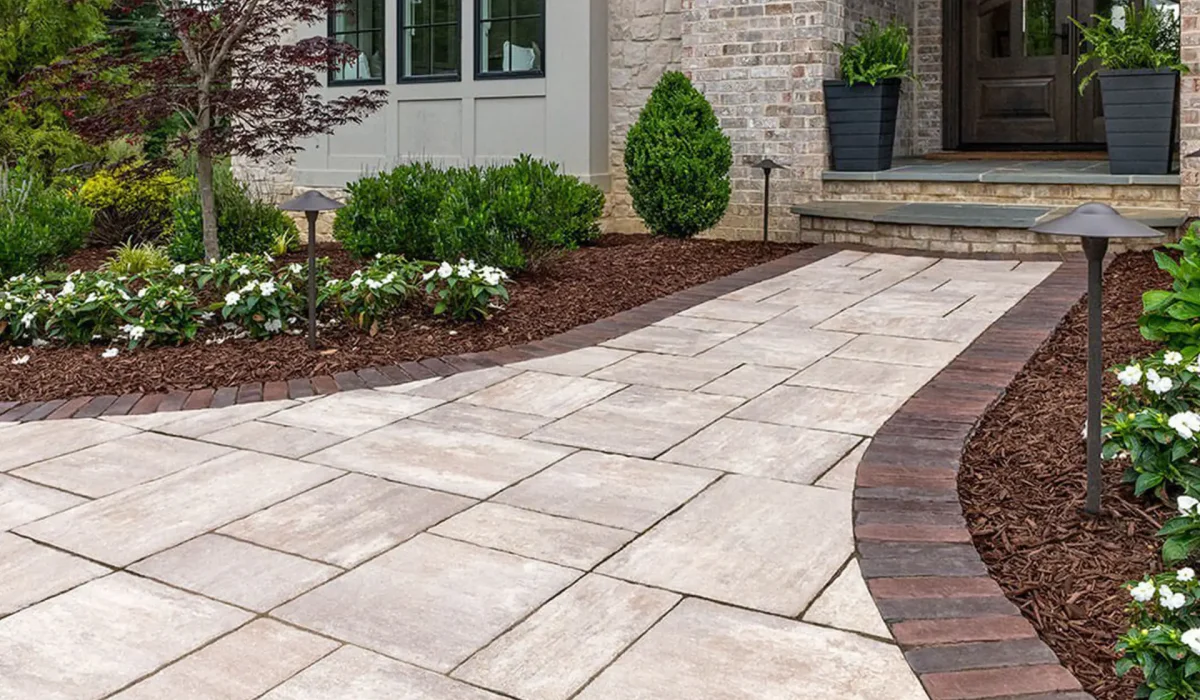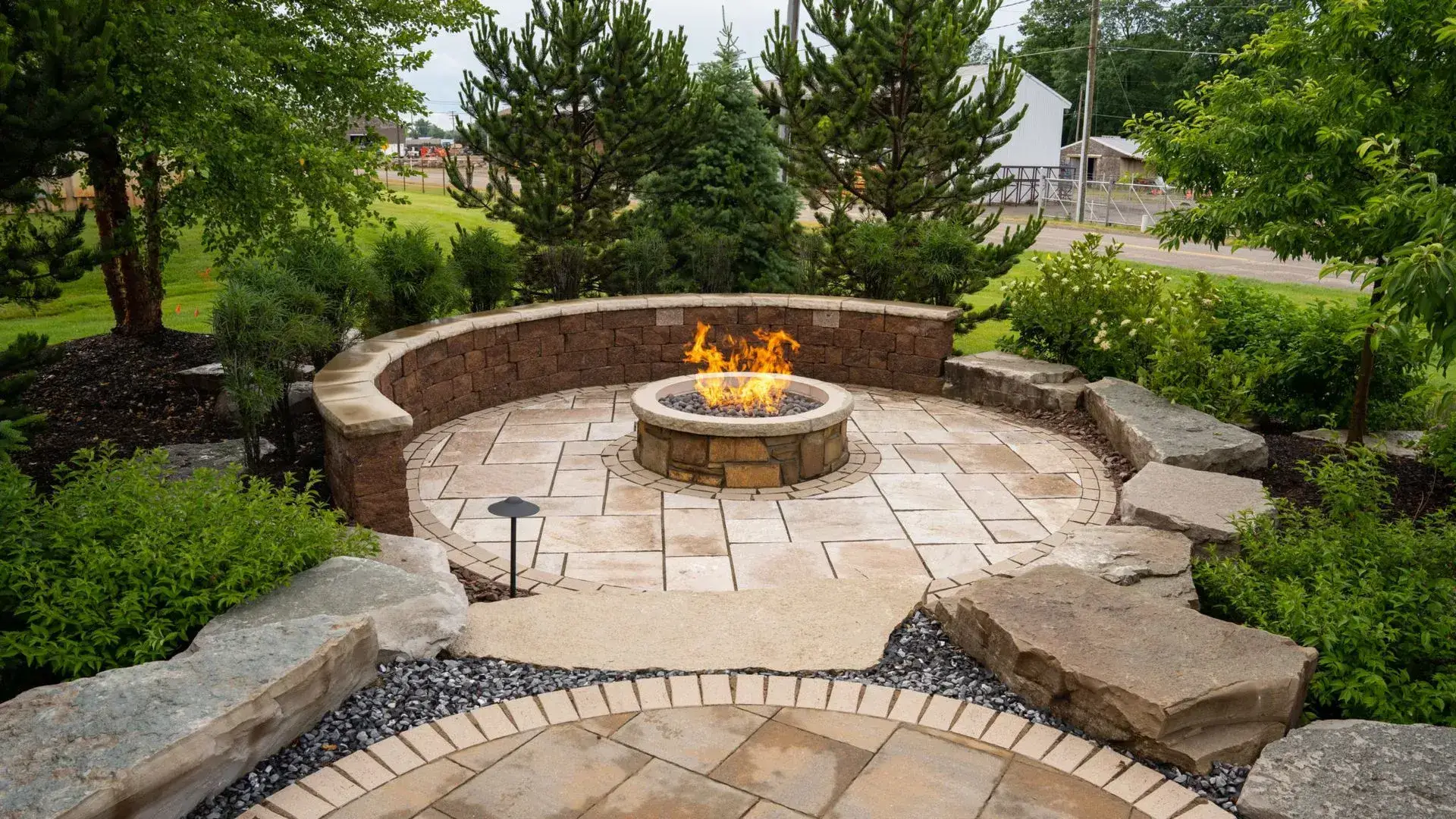
- Everlast Landscape and Design, LLC.
- Brick Paver Walkways
- Brick Paver vs. Concrete Walkways: What’s Best for Your Home?
Brick Paver vs. Concrete Walkways: What’s Best for Your Home?

Brick Paver vs. Concrete Walkways: What’s Best for Your Home?
How a Retaining Wall Prevents Soil Erosion
The wrong walkway material can lead to cracking, shifting, or mismatched aesthetics that detract from your entire yard. Many homeowners struggle with choosing between the timeless look of brick and the efficiency of concrete walkways.
Blending hands-on skill with long-term durability, Everlast Landscape and Design, LLC delivers hardscaping solutions that perform as well as they look. Serving homeowners across DuPage, Cook, and Kane counties, we install everything from custom paver walkways to full-scale concrete driveways—built to handle the Midwest’s toughest conditions.
When it’s time to choose between pavers and concrete, understanding the differences means getting the results your property deserves. If you’re comparing materials for your next hardscaping project, here’s how pavers and concrete really measure up—based on what matters most.
Whether you prefer the classic beauty of pavers or the strength of concrete walkways, Everlast Landscape and Design, LLC is ready to help. Start building a walkway that fits your home perfectly.
Pros and Cons of Brick Paver Walkways
Pavers are known for flexibility and visual interest. But beyond design, there are important installation and performance factors worth considering.
Style & Custom Patterns
One of the strongest design benefits of brick pavers is pattern variability. They can be arranged in multiple ways—herringbone, running bond, basket weave—offering a more personalized appearance than poured materials. This makes pavers ideal for decorative outdoor paths, especially around patios and gardens.
For patios that show wear or cracking, check out our guide on cracked driveway and patio repair vs. replacement.
Unlike stamped concrete, the patterns in pavers are structural—not surface-level. That means your design won’t fade or wear down over time.
Repairability
Pavers are laid in segments, which makes isolated damage easy to address. If part of your walkway lifts or shifts due to root growth or settling soil, our crew can remove and reset only the affected area. No saw cuts, no poured overlays, and no visual mismatches.
This is one of the key advantages when comparing concrete vs pavers for long-term maintenance. It’s a system built for modular correction.
Cost & Installation Time
Paver installation requires a multi-layer base system: compacted gravel, bedding sand, edge restraints, and joint locking. This process adds time and labor, often translating to higher upfront costs.
However, because pavers often last 25–30 years with minimal maintenance, they offer strong value for homeowners willing to invest in durability and custom design.
Pros and Cons of Concrete Walkways
Concrete walkways remain a top choice for homeowners seeking streamlined paths that are both functional and cost-effective.
Affordability
Poured concrete is faster to install than pavers. Fewer steps and a single pour mean your project can often be completed within a few days. For homeowners managing large-scale landscape updates or multiple outdoor paths, this efficiency keeps costs under control without sacrificing durability.
The national average cost for a basic concrete path ranges between $8 and $12 per square foot—making it one of the most affordable hardscaping solutions on the market.
Cracking Over Time
While modern concrete mixes include fibers and control joints to help reduce cracking, all concrete surfaces are still vulnerable to ground movement and thermal expansion. Illinois freeze-thaw cycles are particularly tough on rigid slabs.
Concrete generally lasts 20–25 years if maintained, but surface cracks or spalling can appear earlier. These conditions require patching or replacement of full panels—not ideal when compared to the simpler fixes of paver walkway installation.
Finishing Options
Finishes go beyond plain gray. You can choose from exposed aggregate for slip resistance, stamped patterns for texture, and tinted mixes for color control. However, even the most detailed stamped concrete doesn’t match the tactile depth of pavers.
Despite this, for minimalist homes or straight-lined landscapes, a well-finished concrete path offers a clean look with low upkeep.

Which Is Best for Austin Yards?
Climate and soil behavior vary greatly by region, and those differences can affect how well each material performs—especially in places like Texas.
Climate Considerations
In walkway design Austin projects, heat exposure plays a bigger role than freeze-thaw. Concrete can reach temperatures of 130°F or more under direct summer sun, which affects usability and comfort. Pavers tend to reflect less heat and allow air to circulate through joints, making them cooler to walk on and less prone to thermal damage.
Both materials require a proper sub-base to avoid shifting, but the expansion space between pavers allows them to adapt more easily in areas with expansive clay soils common to central Texas.
If you’re planning new outdoor upgrades, make sure your yard is ready year-round with our seasonal lawn care guide.
Aesthetic Fit with Landscape/Hardscape
Materials should always complement surrounding features. For homes with stucco siding, xeriscaping, or modern architecture, poured concrete often supports a clean, geometric aesthetic. On the other hand, pavers work better in properties with stone walls, curved planting beds, and ornamental landscaping.
When considering concrete vs pavers, think of your yard as a whole. Each hardscape element should tie into the next—functionally and visually.
What Everlast Offers: Expert Walkway Installations
Walkway installation isn’t just a task—it’s a technical build. From compaction to slope grading, we approach every job with precision.
Consultation + Design Options
We offer material consultations and walk-throughs of your space to evaluate drainage, elevation, tree proximity, and foot traffic routes. Based on your budget and preferences, we help you determine whether pavers or concrete walkways are better suited for your long-term goals.
During design, we’ll show you edge options, joint styles, and color variations that align with your existing yard or planned upgrades.
Portfolio Highlight
Our projects range from decorative front yard approaches to high-function side paths and multi-tier access points. We’ve installed paths with lighting conduit runs, ADA-compliant slopes, and blended material transitions—each designed to meet real needs without sacrificing looks.
If you’re considering paver walkway installation or poured concrete, we’ll show you examples based on similar yard layouts.
Brick Pavers vs. Concrete Walkways: Making the Right Choice for Your Home
Choosing the right material isn’t about trends. It’s about selecting what holds up, looks right, and fits your home’s design. Concrete walkways offer speed and affordability. Brick pavers provide visual depth and long-term flexibility. The right answer depends on how you live, and how long you plan to stay.
Let Everlast Landscape and Design, LLC handle your project with the skill and transparency you expect. Browse our Brick Pavers Walkway page or learn more about Concrete / Driveways.
Brick pavers and concrete walkways each offer lasting value when installed by experienced hands
Articles We've Chosen For You:


Useful Links
©2025 Everlast Landscape and Design, LLC. All Rights Reserved.
🚀 Powered by SEOLEVELUP, LLC® Website Design SEO Company
